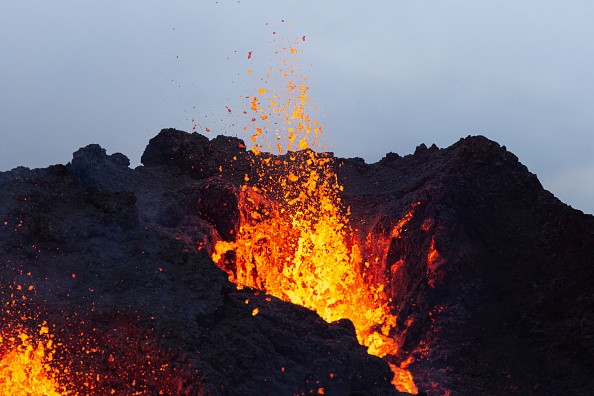Volcano researchers discovered a potential supervolcano in Alaska, with one scientist warning it could have a "great global impact". In recent days, Alaska has been in the headlines after an eruption of its Great Sitkin volcano last week.

Emission of Volcanic Ash Into the Atmosphere
Last Thursday, the US Geological Survey revealed a red warning had been raised - showing that there is a possibility of significant emission of volcanic ash into the atmosphere. The Alaska Volcano Observatory said on Thursday a "short-duration" explosive eruption of about one-two minutes took place at 5:04 GMT, bringing about an ash cloud up to 15,000 feet above sea level.
"Since that explosion occurred, seismicity has reduced and satellite images reveal that the ash cloud has been separated from the vent and is moving towards the east," they added. According to the observatory website, Alaska is responsible for over three-quarters of all US volcanoes that have erupted during the past 200 years.
Scientists have been compelled by volcanic activity in the area and were amazed when they discovered what could be a supervolcano in the Aleutian islands of Alaska. December last year an American Geophysical Union study said the volcanic islands cluster could be a single great volcano almost the same as that of the Yellowstone Caldera.
Mount Cleveland
A geophysicist at the US Geological Survey's Alaska Volcano Observatory, John Power, said the super-volcano would be so enormous, it could have disrupted civilisations all over the world. Co-author of the study, Diana Roman of the Carnegie Institution for Science in Washington, DC, added: "We've been scraping underneath the couch cushions for data. "But all the things we look at lines up with a caldera in this region."
Ms Roman added that if the supervolcano hypothesis is verified, it could give an explanation of the frequent explosive activity witnessed at Mount Cleveland. Mount Cleveland is possibly the most active volcano in North America for the last 20 years at least. It has generated ash clouds as high as 15,000 and 30,000 feet above the level of sea.

Impact on the Climate
A volcanologist with the USGS's Yellowstone Volcano Observatory who was not part of the study, Michael Poland, offered his analysis on the hypothesis of Alaskan supervolcano.He said it could possibly have a "great global impact". "These very large calderas have very large impacts all over the world, Mr. Poland said.
He added that this potential identification assists in understanding what might be expected, why Cleveland is so active, and understand the hazards. A study released in the journal Geophysical Research Letters in March clarified what could occur when such a super-volcano erupts, mainly its impact on the climate. The researchers tested various volcanic forcing scenarios, lasting many years and with a summit in volcanic emissions.
For more news, updates about volcanoes and similar topics don't forget to follow Nature World News!
© 2025 NatureWorldNews.com All rights reserved. Do not reproduce without permission.





